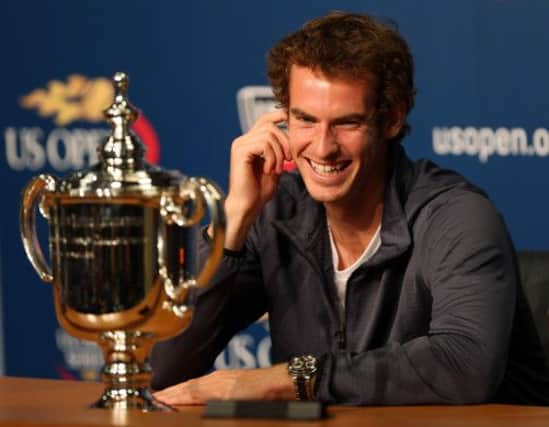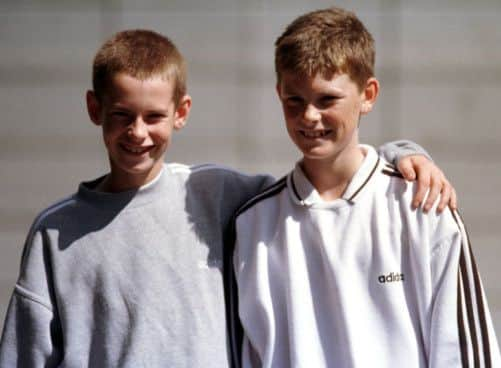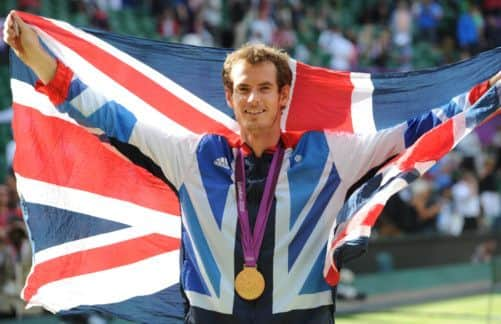Andy Murray: The grass is always greenest


It is one of the four most prestigious tournaments in the world and yet, really, it does not matter. Not here. Not in Britain.
For most of the tennis-watching public in good old Blighty, the start of the French Open means just one thing: the grass court season is only two weeks away.As soon as the trophies and the cheques have been handed out in Paris, the players rush to the Eurostar station, shaking the red dust from their shoes as they go, in order to fling themselves towards Britain and its slick green lawns for a mad month of pressure. Andy Murray, though, is already here and has been for weeks. A back injury blighted his clay court season and, rather than jeopardise his Wimbledon chances, he pulled out of the French Open to let himself rest and recover. Wimbledon is the ultimate prize and any sacrifice – even a tilt at another grand slam – is worth making in order to win it.
Advertisement
Hide AdAdvertisement
Hide AdThe French, Australian and US Opens are venerable tournaments and their trophies are priceless to the winners, but Wimbledon stands head and shoulders above the rest. It is the tournament the players dream of winning when they first pick up a racket, and as soon as they set foot on British soil, they know that all roads lead to SW19.


For the local lads, though, Wimbledon can be a curse. A little like the Scottish Play, it ought not to be spoken of outside the All England Club for fear of inviting disaster. In a country desperate for home-grown success, the wait for a domestic champion to cheer to the rafters has been interminable, so any young lad with a clean pair of shorts, a bat of his own and a modicum of talent is lauded as the next Fred Perry. But for 76 years, no one lived up to that billing – Tim Henman and Greg Rusedski were never quite good enough, and the rest didn’t stand a chance. Then along came Murray.
For the first time since Fred Perry, the Centre Court crowd had one of their own to cheer last summer as the Scot battled his way through six rounds to book his appointment with Roger Federer on the final Sunday. And for the first time since he faced Federer in the US Open final of 2008, Murray did himself justice in the match. In his previous grand slam finals, he had been either outplayed (in 2008) or overwhelmed by the moment (the Australian Open finals of 2010 and 2011). Murray, as we all know, did not beat Federer last July, but he showed he was inches away from getting his hands on a major trophy. The game was on.
Just five weeks later, he was back on Centre Court facing Federer in the Olympic final and, this time, he got his reward. At last he had won a major final and he had done it by beating one of the greatest players the sport has ever seen. Five weeks on from that, he was out-hitting Novak Djokovic to win the US Open title, his first grand slam trophy and Britain’s first since 1936, when that man Perry did the honours.
Murray’s tearful runner’s-up speech at the Wimbledon presentation ceremony 12 months ago won him new friends and admirers up and down the country and across the globe. This was a side of Murray the public had never seen before: emotional, sensitive, passionate about his sport and deeply appreciative of the support he had been given. By the time he had said his piece, there was scarcely a dry eye in the house – every woman in the crowd wanted to give him a hug and every man wanted to take him out for a pint.


For so many British players, Wimbledon is the breaking of them. They take their large first-round loser’s cheque and trudge back to the Challenger circuit, the bottom rung of the professional ladder, and are never seen again. Well, not until the next year, when they take their wild card with trembling hands, appear on the back pages of the national press for a day and then lose in straight sets. But for Murray, Wimbledon was the making of him.
From the moment he walked through the gates of the famous old club in 2005, Wimbledon has been his stage. As a spindly, pale-faced teenager, he acted as if he belonged on the most famous show courts in the world, and now, eight years later, he is back as one of the main contenders for the title. There have been ups and downs in the intervening years – coaches have come and gone, the English media has, at times, struggled to understand this talented Scot who appeared to be everything that Tim Henman wasn’t, and Murray’s own belief in his ability to win a major title has sometimes wavered. But throughout it all, the crowds on Centre Court have cheered him on. Wimbledon is now his home-from-home.
Murray was only 18 when he played his first senior match at Wimbledon, and the stuffy atmosphere was not to his liking; the rash, brash energy of the US Open in New York was more to his taste. Yet Murray is neither rash nor brash; he is basically a shy man who prefers the quiet life. True enough, he will stand up for what he believes to be right and he will not shy away from an argument, but deep down he likes to keep away from the limelight and spend time with his friends and his family. And his dogs. Never forget his dogs: Maggie and Rusty, two Border terriers who have their own Twitter account.
Advertisement
Hide AdAdvertisement
Hide AdThese days, Murray has come to appreciate the All England Club and what it has to offer. He may only be 26, but that is positively middle-aged in tennis terms and now he cherishes the peace and quiet of SW19 and likes to reflect on the journey he has taken to get this far. “I have sat on Centre Court with no-one there and thought a bit about the court, the matches I have played there,” he muses. “If I had done that five or six years ago, I would not really have known what I was looking at. It was just another court. But when you have played so many matches – and I have a lot of memories from that court; it means a lot to me – when you sit down you think about all the matches you played, not just one. It seems like a long time ago since the first time.”
When he goes back this year for a quiet think, he will have so many memories to draw upon. His first appearance there – against David Nalbandian in 2005 – must seem like a lifetime ago, but that patch of grass in front of him is where he has grown up in front of the public’s intent gaze. For the month of the grass court season, his every move, utterance and expression is watched, discussed and dissected. Is he fit? Is he ready? Can he win it this time? There is no hiding place on Centre Court, and in the brightest of spotlights Murray has gone through eight years of trials and tribulations; he has shared some of his greatest highs and deepest lows with the 15,000 packed into the old arena. Yet, for all that, so few people know what the real Andy Murray is like.
His ability to absorb the pressure and expectation that goes with being Britain’s best in SW19 is remarkable. Henman always tried to cut himself off from the hullaballoo that was going on around him but, even so, he always looked pale and drawn as the tournament got going. He was nervous, plain and simple, and it showed. Murray, too, gets nervous – and any player who does not have sweaty palms before a big event is in the wrong job – but he is better at using the tension to his advantage.
Keeping his routines simple and his friends close, Murray can let the pressure subside when he shuts the door of his £5 million mansion in Surrey. Just half an hour’s drive from the All England Club, this is his sanctuary. Every night, he can sleep in his own bed (a rare luxury for the travelling band of tennis pros), he can walk his dogs, he can even – when the mood takes him – help his girlfriend, Kim Sears, cook dinner (he only goes as far as chopping the odd vegetable, mind you – Scotland’s finest is no Masterchef).
His family descends on Wimbledon throughout the fortnight but aside from a brief ‘hello’ in passing, he leaves them to their own devices until the tournament is over. Then he relishes their company before making his excuses and heading to the airport and the journey to another training block or another event. “When I first started playing, you’re not really thinking about the pressure,” he says.
“Then in the next few years it changes a little bit, you’re kind of expecting it and it does become fairly hard, but now I guess I probably understand more how to manage my time a bit better, not do so many sponsor activities the week beforehand, give myself as much time as I can to train and prepare. That’s what was hard when I first came on the tour, I said yes to everything and then the week before Wimbledon you would all of a sudden have five commitments that you had to do and all over the place in London.
“Kim understands tennis very well. Her dad’s a tennis coach. Having her around after the Wimbledon final, which was obviously a very tough loss for me, was great. She helps pick me up. She was the only person really I saw for about four days after the final. Having her around helps.”
Sears and Murray have been together for eight years. She is the daughter of Nigel Sears, currently the coach of Ana Ivanovic, and has spent her life around professional tennis. She is no wag, however, and keeps herself very much to herself. A quiet and dignified presence at the courtside, she steers clear of the spotlight and focuses her attention on her painting – she specialises in animal portraits – and just living a normal life. Calm and supportive, she has been Murray’s mainstay throughout his career. “The good thing is that she’s not really into fame or anything so she’s not going out of her way to get pictures taken of her,” he says. “She keeps a pretty low profile, which is obviously nice. And she has been around tennis all her life so she understands what’s going to be happening.”
Advertisement
Hide AdAdvertisement
Hide AdThe other key figure in the Scot’s life, and another who knows exactly what will be happening, is his coach, Ivan Lendl. This will be their second Wimbledon together but this time Lendl knows it will be much easier. The pressure was fierce enough last summer but, with the London Olympics just weeks away, Britain was whipping itself up into a sporting frenzy. And then Murray went and reached the final.
The stone-faced former world number one had never seen anything like it, and as he tried to console his player after the defeat he offered one vital piece of advice. “Ivan told me after the Wimbledon final that he was really happy with the way I played the whole tournament,” Murray recalls.
“He has never been around a British player during Wimbledon, so he maybe didn’t quite know what it was like. He was saying I’ll never play in a match under that much pressure again in my life. So that’s good news. I did feel much more relaxed going into the Olympic final than I did going into the Wimbledon final. I think now that’s how I managed to win.”
Even so, when he stepped out to face Djokovic at the US Open, there were still nagging doubts. He had lost his first four major finals – just like Lendl – and he didn’t want to go down in history as the bloke who lost his first five grand slam finals. Djokovic, an old rival from their junior days, would be a brutal opponent – Murray knew that from bitter experience – and the Scot wondered if he could win. “Ivan just said, ‘Just enjoy the match,’” Murray says. “‘It’s what you’ve worked all your life towards so enjoy it.’ And I was like, ‘That’s exactly the problem. I’ve been working ten years for this and it’s a big moment for me, and I don’t know if I’m going to enjoy it.’ And he was, ‘Oh, why not? Come on. You’ve got to try and enjoy it.’ And that was kind of how it went.”
Nearly five hours later, Murray was the US Open champion. He was tired, his body ached and he was utterly stunned, but his life had changed forever. Never again would there be the doubts, never again would there be the stomach-churning fear that this next match might be his last chance to win a major title. Now he was free to play – and play he did, all the way to the Australian Open final (he lost to Djokovic, but that was OK; the world number one just played better on the night) and on up to reach number two in the world rankings.
But away from the courts and the fuss, Murray has not changed a bit. He is still the same hard-working professional he always used to be. He still loves to poke fun at the middle-aged media throng that trudges around the world behind him, he is still fiercely protective of his friends and family and he still gets all soppy when he plays with his dogs. He still looks grim and focused on-court but off-court he is still polite, funny and interested in all manner of subjects. And he is as competitive as ever on his PlayStation.
So as Murray sits and stares at the empty Centre Court, planning his challenge for Wimbledon 2013, he knows nothing will ever be as nerve-wracking as that first final last summer and that he does, indeed, have what it takes to win a grand slam title. And now he is back at home, back on his favourite stage and back in front of his favourite crowd.
As he said through the tears last summer, “Everybody always talks about the pressure of playing at Wimbledon, how tough it is, but it’s not the people watching [that create the pressure] – they make it so much easier to play. The support has been incredible, so thank you.”
Advertisement
Hide AdAdvertisement
Hide AdThe world’s view of Murray may never be the same again after all he achieved last year, but deep down Murray is the same as ever: a thoroughly decent bloke, hugely talented and willing to give everything he has to win. Wimbledon lies ahead of him, and this year he might just make it his.
Twitter: @AlixRamsay
Wimbledon 2013, 24 June to 7 July